Sometimes I scare myself, walking in the dark around the pond.
At night, it becomes a very different place, filled with different sounds,
illuminated only by the moon—and my flashlight.
Back in a shallow corner, the toads are trilling again. I can see their small bodies in the distance, sitting on clumps of algae—projecting their songs across the water into the night.

And, at the shoreline, a pair of steady white eyes that are caught in the beam of my light, as I scan the surface. Probably deer, unsure if they should bound into the safety of the woods--for I know they drink at this shallow, and follow the many prints they leave on these trails.
The water is already lower than I had hoped, for April. Spring rains that filled it to bursting a few weeks ago, have already found their way to a muskrat hole and emptied a foot of depth. But the edge areas are walkable now, and nighttime hides my stalking figure from what lives here.
They seem to have no fear—at least of me—as they summon others of their kind. American toads.

Or is it, that the force that has drawn them from land to this water is stronger than fear.
I dim my light, and unseen figures raise their voices, joining the appeal.
A splash...and a swirl startle me.
Probably, the muskrat, who crosses these shallows underwater, is equally alarmed--
surprised to see my large spotted boots so close to her watery front door.
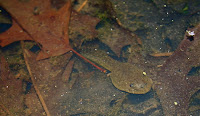 Little ripples disturb the smooth surface,
Little ripples disturb the smooth surface,
as last year's bullfrog tadpoles
and small fish scurry past my toes.
In the reflected light of the full moon, I can see now that the water beside me has been interrupted -- a large mass of algae protruding above the surface. Almost as if I wasn't standing there at all, a huge snapping turtle, barely identifiable beneath her mossy shell, drifts closer--her feeding, the swirling I thought to be the muskrat.
This enormous turtle, that, in daylight, plunges beneath the surface when I approach from yards away, now, calmly searches the muck around my boot for dinner--or perhaps, intends to snag a distracted toad.
An unusual sound, muffled and throaty, draws my eyes to the opposite bank. I watch with my light as she leaves, the dry grass rustling as her small form moves away from the pond toward the oak woods.
She pauses often to look back at me as she trots off—
her glowing eyes, amber.
Animals of the night have eyes that have a mirror-like surface, the tapetum lucidum, which intensifies what little light there is available. When a flashlight or headlight of a vehicle reflects off this surface, the eyeshine of a characteristic color is sometimes seen. 



























































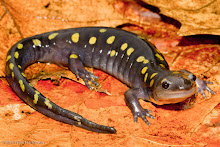




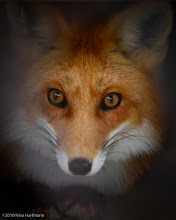

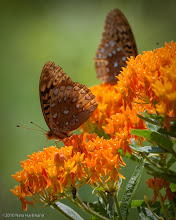

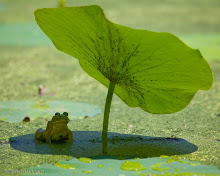
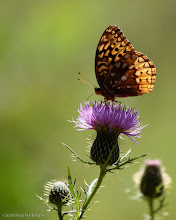
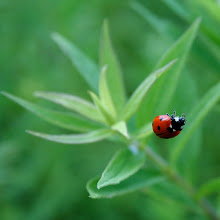




























%20copy.jpg)














